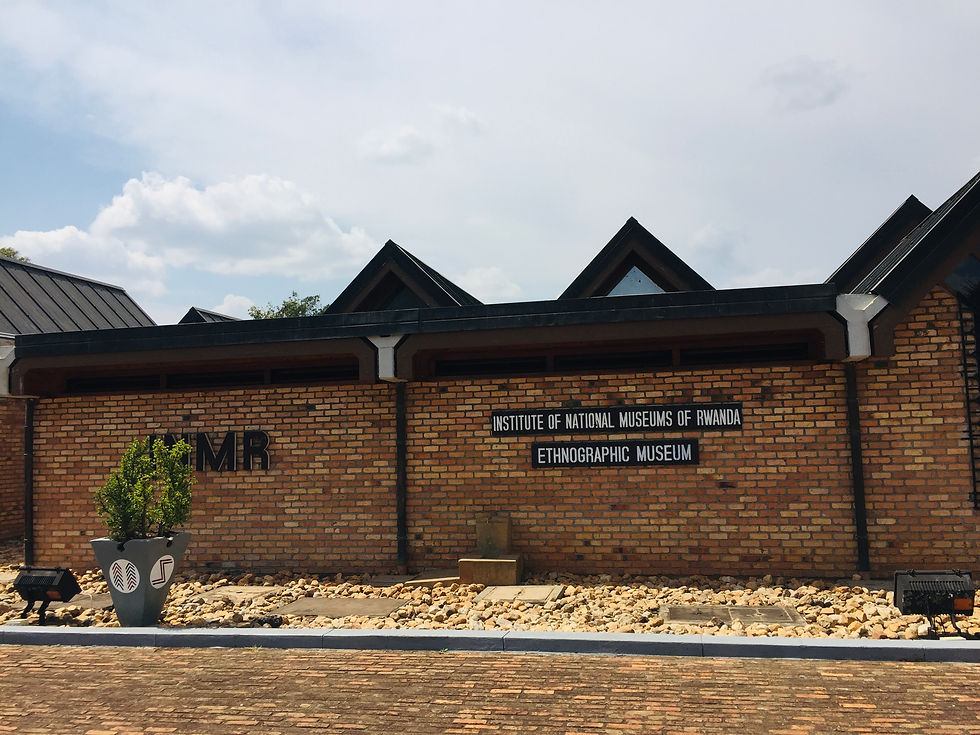
Lush and green with thousands of rolling hills, Rwanda is home to endless mountains, mountain gorillas and absolutely stunning scenery. Rwanda came to the world's attention under unfortunate circumstances; In the 100 days between April 7 and July 15, 1994, around 1.1 million citizens were killed in the Rwandan genocide. Since then, the country has successfully advanced and has emerged as strong and united. Rwanda's story is about a country that has risen from the ashes, deciding to put the past behind it and invest in people, wildlife and nature. Located in the heart of Africa, Rwanda is a small, landlocked country with a population of approximately 13 million people that borders Burundi, Tanzania, DRC and Uganda.
After a 7-hour drive from Kampala, we arrived at the Gatuna border of Uganda and Rwanda. We had a lovely conversation with the Ugandan border personnel, cleared my car with the tax authorities then drove across the border to Rwanda. The immigration process was straightforward, well, up until we got to the Rwanda Customs personnel. "Open your bags, please," the Rwandan official asked. While this is not an unusual request at borders worldwide - officials often search for contraband like alcohol, drugs, seeds and agricultural products - the Rwandan officials hunt for something more interesting, PLASTIC BAGS! Banned by law since 2008, any plastic bag in luggage is confiscated at any point of entry into the country.

Dubbed as "Africa's Switzerland" or "Africa's Singapore," the country is astonishingly clean - it is the rare African country that will meet the cleanliness standards of most neat freaks and germaphobes. Driving through Rwanda, we could sense a different feeling - greater calm and slower movement. The streets were wide and clean, with little to no garbage. The motorcycle riders wore helmets and safety vests, and honking was almost non-existent. Within 2 hours from the Ugandan border, we were in Kigali and were welcomed by my sister and her beautiful family. We spent a couple of days bonding over wine and cheese; somewhere along the way, I convinced my adventurous, free-spirited cousin Richo to explore with me - and voilà, we were out on a southern tour of Rwanda. Here are some of the places we visited:
Lake Kivu

Located along the western border between DRC and Rwanda, Lake Kivu is surrounded by magnificent mountains. It is Rwanda’s largest lake, dotted with islands and inlets along its shoreline, charming beach resorts, spectacular views and plenty of opportunities for hiking and cycling. On the coastal strip of the lake, there are two places where you can spend the night: Kibuye and Gisenyi. Pick Kibuye if you want peace and quietness. Gisenyi is more lively with many hotels, bars and restaurants. Kibuye is a beautiful lake-side town on the shores of lake Kivu. It is the capital city of the western province of Rwanda, located on the eastern shore of lake Kivu. Located about 135 km from Kigali and 85 km from Nyungwe forest, it has several resorts popular for sunbathing, swimming and water sports, speedboats, canoe sailing, mountain walks and picnics.


Nyungwe National Park

After Kibuye, we drove south of Lake Kivu and entered Nyungwe National Park in Cyangugu. Nyungwe’s majesty is imposing; its primal presence unleashes itself onto you while you’re still the car along the road. One moment the road is winding through a characteristic rural Rwanda landscape of rolling tea plantations and terraced hills; the next, a dense tangle of trees rises imperiously from the fringing cultivation. The road takes sharper turns, clinging improbably to steep forested slopes, offering grandstand views over densely swathed hills that tumble like monstrous green waves towards Burundi.

Nyungwe National Park holds the source of Africa’s great rivers, feeding into the Nile River in the east and the Congo River in the west. The National Park is well-known for being the most endemic species-rich area in Africa, with various ecosystems from rainforests, bamboo, grassland, swamps, and bog habitats. It’s home to about 1,000 plant species, habituated chimpanzees, and 12 other primates, including 400 Black and White Colobus monkeys and 75 different species of mammals. For bird watchers, Nyungwe National Park is the place to be, with over 310 species, of which 27 are Albertine Rift endemics. There are many colobus monkeys here, and one way to spot the monkeys and see the forest is on a canopy walk. The walk is 90 metres long and 50 metres above the ground, giving you a beautiful view of Nyungwe forest.

Ethnographic Museum of Rwanda

We ended our trip in Butare (also known as Huye), a university town in the southern province of Rwanda, that has long been regarded as the intellectual capital of Rwanda. As we were rushing back to Kigali, we only had time to explore the Ethnographic Museum of Rwanda. A gift from Belgium’s King Badouin in the late 1980s, the Ethnographic Museum houses one of Africa’s finest ethnographic collections. Seven galleries display historical, ethnographic, artistic and archaeological artifacts accompanied by visual aides, giving visitors a rich insight into Rwandan culture. The exhibits open with geographical and geological displays, moving on to items used in hunting, agriculture, animal husbandry, pottery, weaving and woodwork. Traditional clothing and architectural methods are also illustrated, as well as the social importance of cattle. Descendants of the royal herd can be seen to this day at the King's Palace in nearby Nyanza. The final room reveals traditional customs and beliefs, history, culture, poetry and oral tradition and cosmology.
What a captivating piece..I wanted to read more..I guess episode 2 coming up😅
Well written piece about our beautiful country. The world needs to know the beauty of Africa, thanks so much for doing yo part.